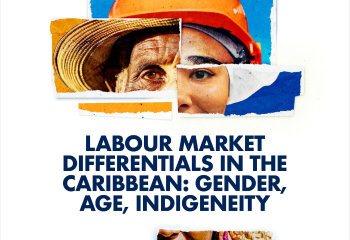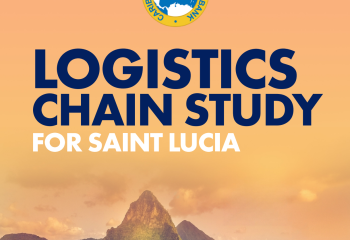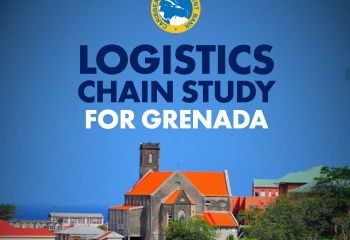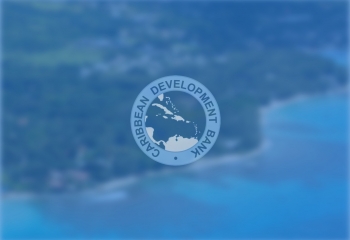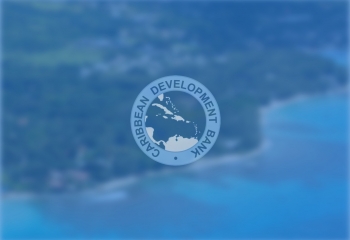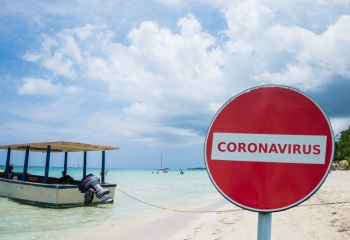Summary
- The Real Economic Cost of Disaster and How to Build Resilience Dr. Justin Ram, Director, Economics Department Grenada October 12, 2017
- Development, how will we do it?
- AGENDA 01 Overall Cost of Disasters 02 Impact on Tourism Economy 03 Economic Vulnerability of the Region and how to Build Resilience 04 CDB’s Role
- The initial costs of natural disasters have been significant Damages caused by storms in region selected storms, selected economies 1989 Hugo 434%of Montserrat’s GDP 2004 Ivan 200% of Grenada’s GDP 2017 Irma and Maria Estimates 90% of Dominica’s GDP 2015 Erika • Estimates not yet available for TCI and Dominica • Dominica anticipated to have lost over 100% of GDP • TCI estimated to have 14% building damage 20% 85% 140% Antigua & Barbuda Anguilla BVI
- Secondary effects have crippled economies for years Higher public debt ratios Decline in key industries Larger trade deficits Economic and Fiscal Impact of Natural Disasters Population migration Total damages to the region from 148 disasters (1950 – 2014) $52 billion Source: Acevedo, 2016
- AGENDA 01 Overall Cost of Disasters 02 Impact on Tourism Economy 03 Economic Vulnerability of the Region and how to build resilience 04 CDB’s Role
- $100 Tourist Spend $35-54 Added to GDP same year $155-160 Long term impact Economic Impact Tourism is a key economic driver and foreign exchange earner for most BMCs 11.2%* Visitor Expenditure BMC GDP 2014 *Direct contribution by BMC varies widely from 1.5% in TnT to 90.6% in TCI. Source: CDB/Deloitte
- Tourism supports over 30% of the labor force in the most affected countries British Virgin Islands Anguilla Antigua & Barbuda Dominica 51% 41% 26% 35% Tourism jobs Share of all jobs 3,000 1,500 6,000 4,000 84% 59% 54% 32% %GDP from tourism in 2014 Source: CDB/Deloitte, World Travel and Tourism Council 9,000 4,500 19,500 11,500 Total jobs (direct and indirect)
- Environmental damages threaten this positive economic impact Factors determining tourism’s economic impact Source: CDB/Deloitte
- Before Irma Codrington, Barbuda The Caribbean is one of the most tourism- dependent regions in the world Most of the productive capital stock that supports the Caribbean tourism sector exists along the coastlines and tend to be most vulnerable. The impact of a natural disaster is felt mostly in the destruction of the capital stock. Source: Bueno et al, 2008 After Irma Before Irma Road Town, Tortola After Irma Road Town, Tortola Before Irma Sint Maarten Port After Irma Sint Maarten Port Before Irma Paraquita Bay, BVI After Irma Paraquita Bay, BVI
- We anticipate a slowdown in visitor arrivals as some ports and hotels are repaired and travel plans are rerouted BMC Visitor Arrivals by type, 1999 – 2014 (thousands) Although cruise visitors spend less than long stay passengers, they have driven visitor numbers and expenditure for the past decade Moved all Eastern Caribbean itineraries to the west for next few months 0 2000 4000 6000 8000 10000 12000 14000 16000 1999 2003 2007 2011 2015 Stay-over Cruise
- The impact of lower visitor numbers will multiply throughout economies Source: CTO In 2015, BMCs had over 22.6M visitors. If those visitors change travel plans this year due to this tumultuous hurricane season, the region will miss out on: 1% 226,653 $137.8M $48.2M $213.6M Visitors would go elsewhere Potential expenditure would be lost Potential 2017 GDP would not be realized Addition to GDP would be missed over the long term + Additional losses from decreased tourism employment
- The impact of lower visitor numbers multiplies throughout the economy After Hurricane Ivan: Grenada’s tourism revenue fell by of pre-storm levels in the first high season 10% Annual GDP fell by 24%due to tourism and agricultural losses Source: The Economist
- AGENDA 01 Overall Cost of Disasters 02 Impact on Tourism Economy 03 Economic Vulnerability of the Region and how to build resilience 04 CDB’s Role
- Weak resilience capacities magnify our economic losses from disaster Environmental and Economic Vulnerability Small size Remoteness Lack of diversification Dependence on external financing Dependence on non- renewable energy Susceptibility to natural hazards
- Other Regional Challenges Macroeconomic Low Productivity & Competitiveness Poor Human Development Environmental Threats Low growth average 1.1 % over a decade High debt regional average 77% of GDP Low commodity prices and declining reserves Jamaica is the 67th country in the WB Ease of Doing Business – highest BMC Large infrastructure gaps Weak governance Inefficient and costly transport links and high energy costs High poverty (43.7%) and youth unemployment (18-47%) Poor education outcomes, skills mismatch and brain drain High crime and citizen insecurity High annual natural disaster costs on average ~2% of GDP Low insurance payouts Insufficient building codes Poor climate change adaptation tools
- ALTERNATIVE ECONOMIC TRANSFORMATION STRATEGIES TRADITIONAL PATHS TO ECONOMIC DEVELOPMENT Alternative Strategies: Inclusive Growth, Low Debt And Prudent Fiscal Management Japan 1% | 239% Figures: Real GDP Growth Rate | Debt/GDP U.K. 1.8% | 89% U.S. 1.6% | 107% Singapore 2% | 112% Australia 2.5%| 41% New Zealand 4.0% | 30% Sweden 3.3%| 42% Sources: Idris Jala, WBG, Country Reports, ECCB Malaysia 4.2% | 56% Jamaica 1.4% | 115.2% Barbados 1.6% | 147.1% Trinidad and Tobago -5.1% | 58% OECS Average 2.6% | 72.4%
- Caribbean Blueprint: A vision for our economies Macroeconomic Productivity & Competitiveness Fiscal rules: • Max debt/GDP Private sector-led growth Private sector-funded infrastructure projects Sustainable Society Stepping back in order to jump better CCRIF and indemnity insurance Resiliency funds Targeted social interventions: • Good quality education for all • Conditional cash transfers to the most vulnerable Strict building code compliance Human Development Environmental Preparedness
- What if we had: 01 Strong leadership commitment? Clear mandates and implementation plans?02 90% relentless implementation?03 06 04 05 Developed regulatory framework? Cross Government and stakeholder ownership and partnership? High levels of accountability and real- time data? Adapted from Gold, 2017
- Essential Elements for Success New Ways of Working Transformational Leadership Source: PEMANDU, 2017
- Implementation Capacity Stunts Regional Delivery Delayed or ineffective project implementation Shared Regional and International Challenges Weak Implementation Capacity Insufficient training Obsolete personnel management systems Ineffective results accountability systems Weak decision enforcement culture Scarce financial resources Elaborate and promising development plans
- Setting up a DU: Best in Class Performance Management Set direction and context Establish clear accountabilities and metrics Create realistic budgets, plans, and targets Track performance effectively Hold robust performance dialogue Ensure actions, rewards, and consequences Source: Barber et al., 2011
- Mandate and Responsibilities
- AGENDA 01 Overall Cost of Disasters 02 Impact on Tourism Economy 03 Economic Vulnerability of the Region and how to build resilience 04 CDB’s Role
- Enhancing productivity and growth Technical Assistance to support Institutional and Regulatory Reforms Human capital base strengthening by leveraging technology to increase access to quality education Fostering innovation, trade and market access ICT infrastructure strengthening through PPPs Performance management and delivery units Public Private Partnership awareness building and support. How the CDB can assist Championing reduced inequalities through inclusive projects
- CDB offers a variety of reconstruction and resiliency funding Emergency Relief Grants Immediate Response Loans Rehabilitation and Reconstruction Loans USD 200K USD 750K Up to for damage assessments and the provision and transportation of emergency relief supplies, water and sanitation resources, roofing materials for emergency shelters and community buildings, and temporary shelter for displaced persons Immediate response Longer-term support for reducing countries’ vulnerability to future disaster, restoring key economic sectors to pre-disaster levels, and other efforts Policy-Based Loans
- While natural disasters capture headlines and national attention in the short-term, the work of recovery and rebuilding is long-term. Sylvia Mathews Burwell
